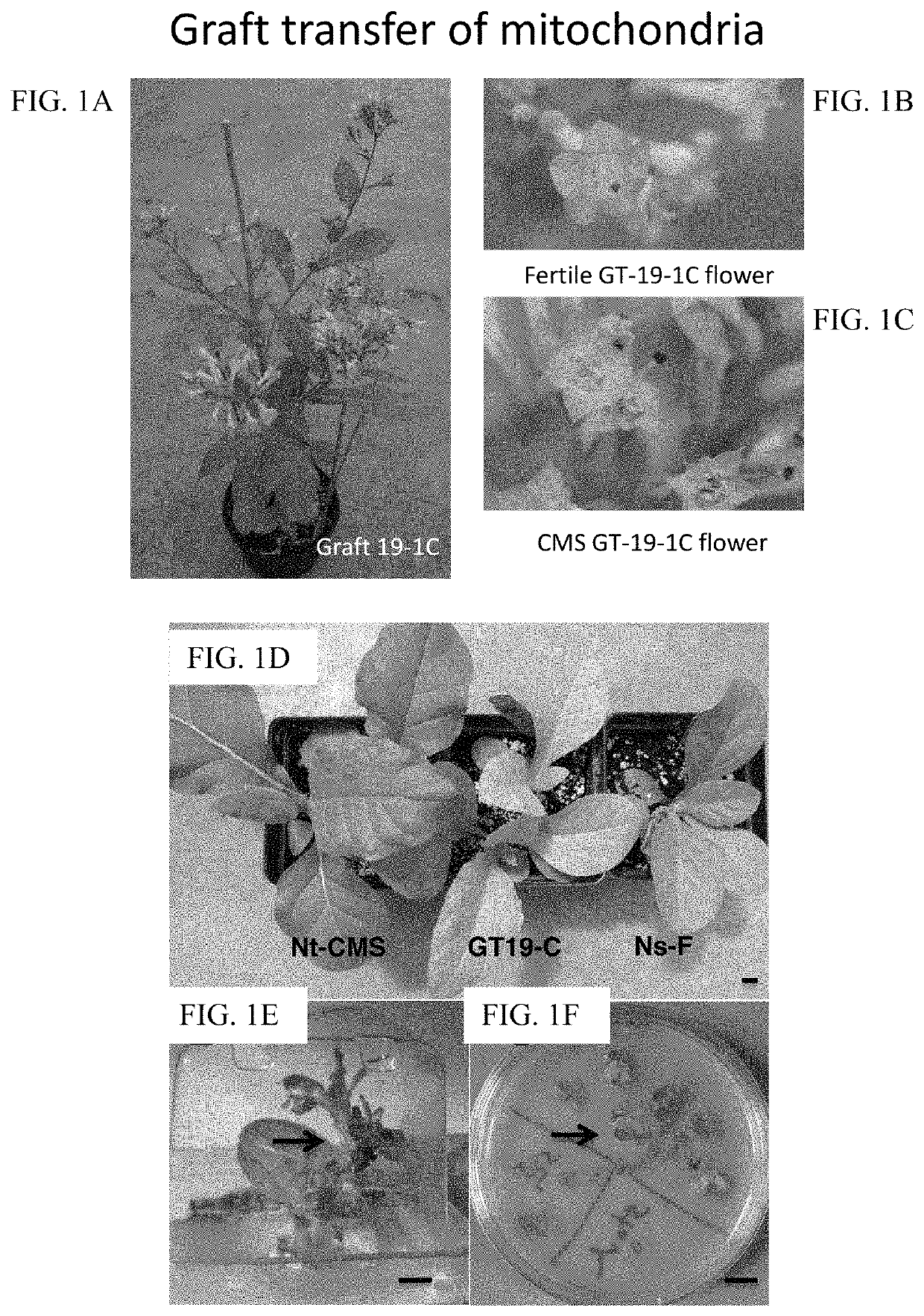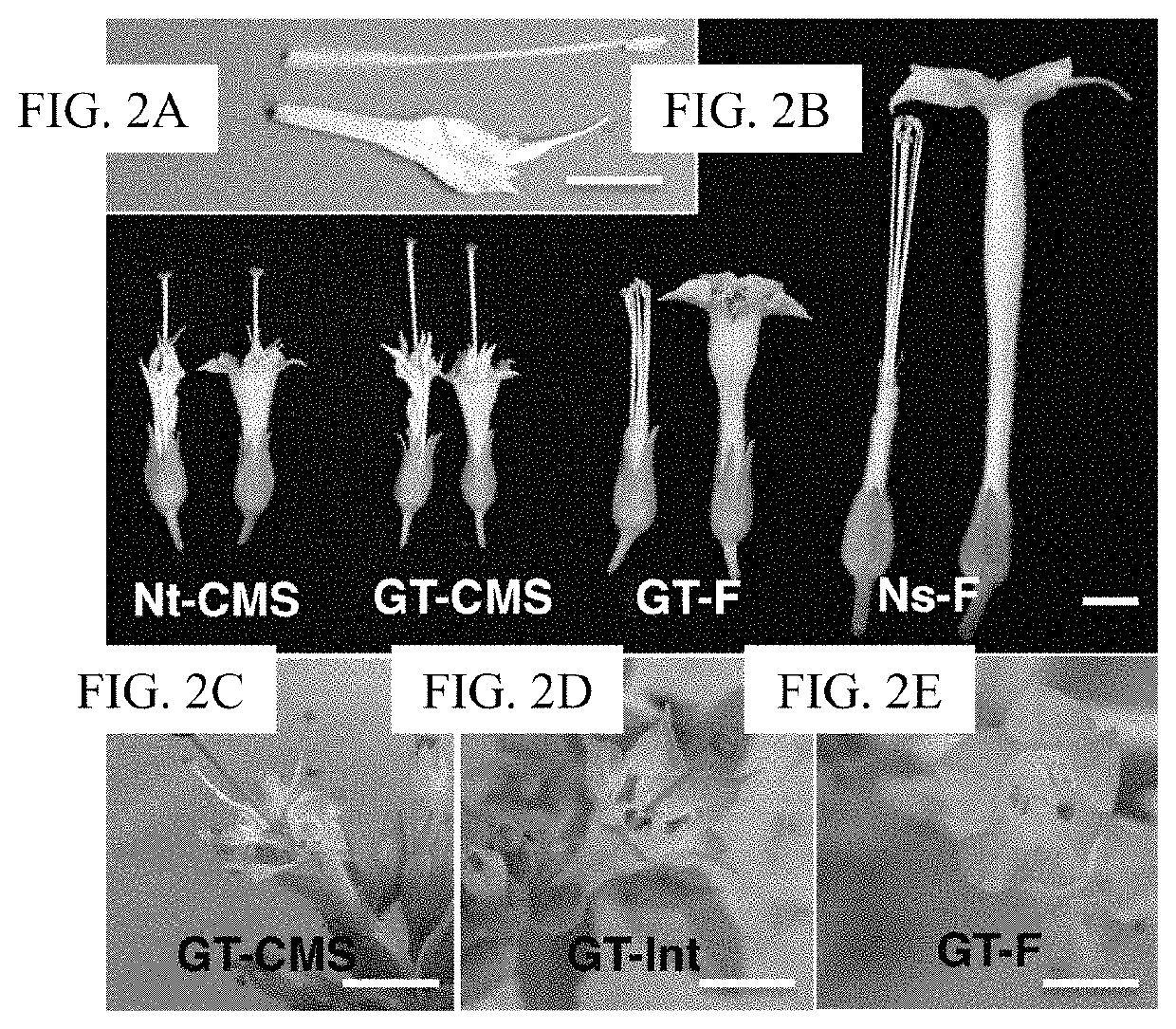Intercellular transfer of organelles in plant species for conferring cytoplasmic male sterility
a technology of intercellular transfer and organelle, which is applied in the field of plant genetic engineering, can solve the problems of unreported intercellular movement of dna-containing organelles, plastids and mitochondria, between plant cells, and achieve the effect of facilitating the recovery of converted male sterile cells
- Summary
- Abstract
- Description
- Claims
- Application Information
AI Technical Summary
Benefits of technology
Problems solved by technology
Method used
Image
Examples
example 1
CMS Tomato by Graft Transmission of Tobacco CMS92 Mitochondrial DNA
[0070]Graft transmission of tobacco CMS92 mitochondrial DNA into tomato can be accomplished via performance of the following steps.
[0071](1) Transform the tomato nucleus with a selectable gentamycin or kanamycin resistance gene. Agrobacterium binary vectors with a number of different marker genes have been described, including those conferring resistance to gentamycin and kanamycin (Hajdukiewicz et al., 1994; Miki and McHugh, 2004). A suitable tissue-culture responsive tomato cultivar, such as IPA64 (Ruf et al., 2001) can be used for this purpose, but other cultivars are available, such as Dorothy's Green and Green Pineapple (Ruf and Bock, 2014).
(2) Create a tobacco plastid genome that is compatible with the tomato nuclear background in the tobacco CMS92 background N. tabacum or N. undulata plastids and the CMS sequence from N. undulata in the mitochondrial genome). This can be achieved by converting codon 264 of the...
example 2
CMS Tomato by Graft Transmission of Petunia Mitochondrial DNA
[0083]CMS in Petunia is associated with Pcf, a fused mitochondrial gene (Young and Hanson, 1987). The petunia fused gene is expressed at the protein level, and the abundance of the 25-kd protein is much lower in fertile plants carrying the dominant nuclear fertility restorer gene (Nivison and Hanson, 1989). The fertility restorer gene is a pentatricopeptide repeat-encoding gene (Bentolila et al., 2002) (US Patent 20030177535). For a review of CMS and fertility restoration in Petunia, see reference (Gillman et al., 2009).
[0084]The mechanism of male sterility is different in Petunia and the CMS92 tobacco line. In Petunia, CMS is due to the expression of a toxic protein rather than homeotic transformation of the anthers as in tobacco. Therefore, it may be also beneficial to introduce the Petunia Pcf gene into tomato mitochondria. The engineering steps required to introduce the Pcf gene into tomato are the same as described fo...
example 3
Graft Transmission of CMS by Transient Selection for Nuclear Transfer
[0085]When transfer of CMS is carried out by selection for a plastid marker, the probability of co-transfer of CMS depends on how much cytoplasm is co-transferred with the plastids. The likelihood of success can be significantly enhanced when graft transmission is used first to obtain nuclear hybrids (Fuentes et al., 2014), in which case more complete mixing of the cytoplasm is likely by the movement of the larger nucleus through the graft junction. Indeed, three out of five nuclear graft transmission events was accompanied by formation of recombinant mitochondria (Fuentes et al., 2014). In Example 3 of the present invention both graft parents carry a different nuclear gene, such as the fertile Parent 1 (tomato) a gentamycin resistance gene and CMS Parent 2 (tobacco) a kanamycin resistance gene. Parent 2 also carries a selectable plastid marker, such as spectinomycin resistance. The two parents are grafted as in Ex...
PUM
| Property | Measurement | Unit |
|---|---|---|
| pH | aaaaa | aaaaa |
| size | aaaaa | aaaaa |
| length | aaaaa | aaaaa |
Abstract
Description
Claims
Application Information
 Login to View More
Login to View More - R&D
- Intellectual Property
- Life Sciences
- Materials
- Tech Scout
- Unparalleled Data Quality
- Higher Quality Content
- 60% Fewer Hallucinations
Browse by: Latest US Patents, China's latest patents, Technical Efficacy Thesaurus, Application Domain, Technology Topic, Popular Technical Reports.
© 2025 PatSnap. All rights reserved.Legal|Privacy policy|Modern Slavery Act Transparency Statement|Sitemap|About US| Contact US: help@patsnap.com



